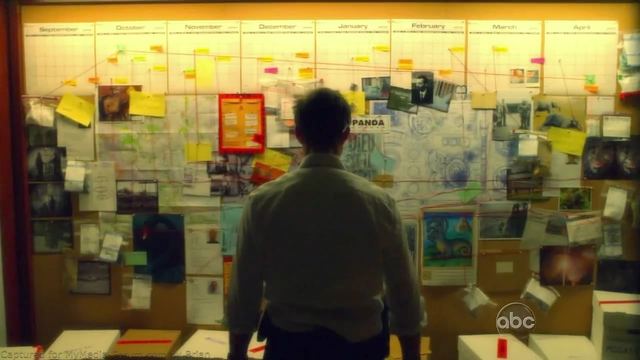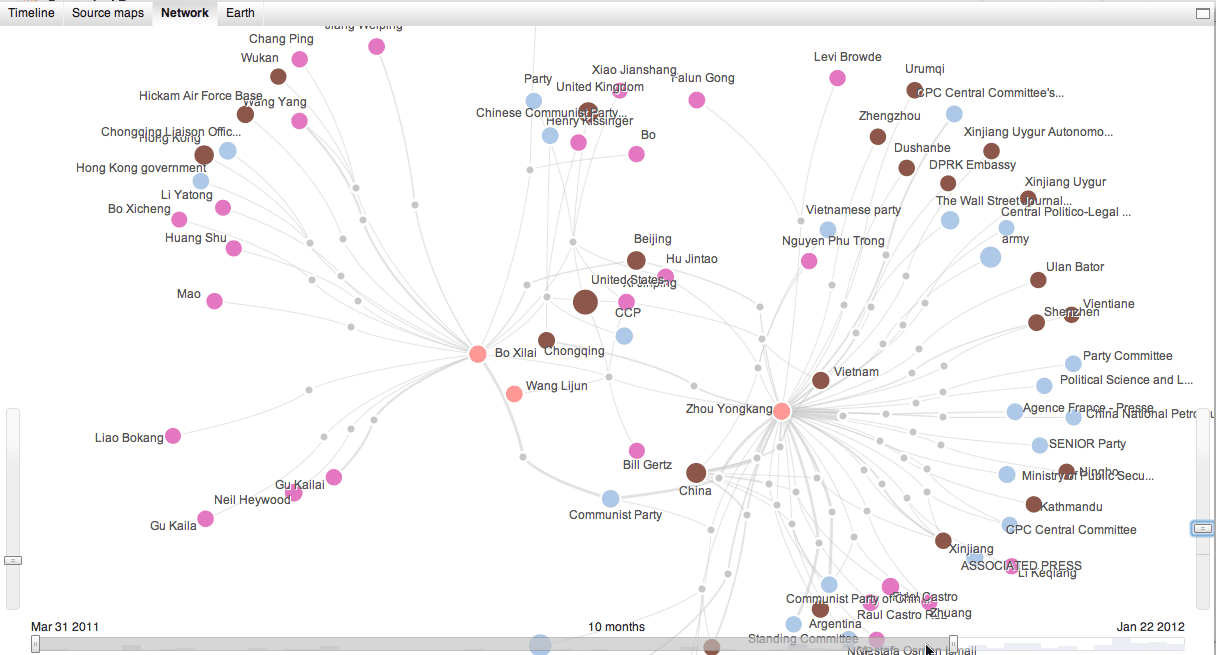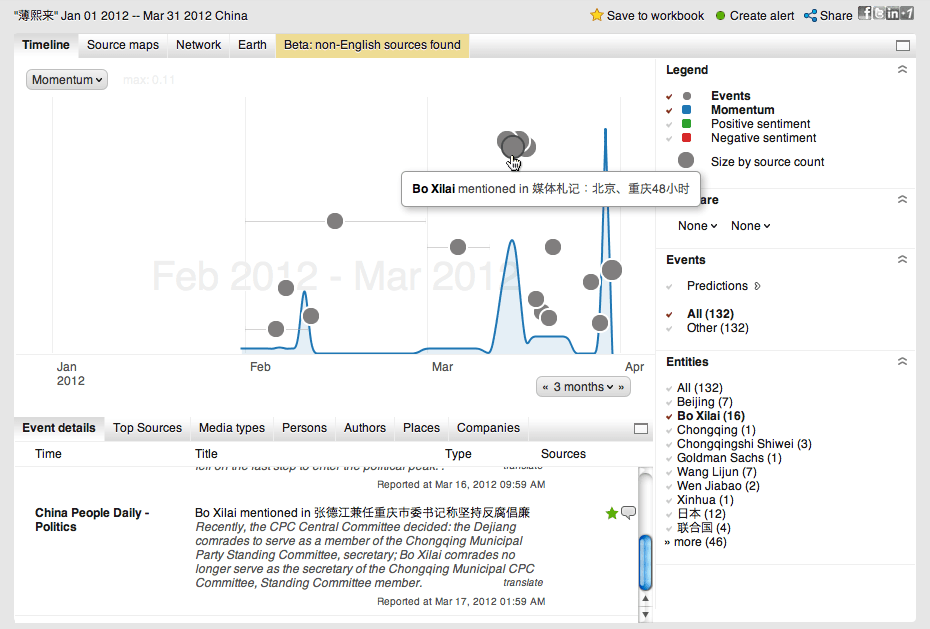Become a Web Sleuth with Link Analysis
Ever seen a mystery or crime film that peaks when the detective reaches an epiphany while staring at a cork board full of photos, clippings, and notes united by a few pieces of yarn? Those moments of revelation show the power of visualizing related but disparate data points (this scene from “The Wire” is an office favorite – brief, not safe for work language at the end).

How does this apply to the rest of us? Take a moment to think about your process for synthesizing all of the media needed for a customer project or summary report or intelligence mission. Maybe the pieces are stored in carefully curated folders or a tool like Evernote; maybe you scribble notes in a document. Whatever your process, if gathering intelligence from the web is laborious then organizing it in an insightful way is even more formidable and error-ridden.
The nature of Recorded Future’s index of time-tagged facts provides the basis for achieving awareness of how historical, current, and predicted events relate to each other without the need for hours or collection and a wall full of clippings and connectors. Let’s analyze recent rumors of a coup in China as an example.
Drawing Up Time-Oriented Networks
While details of the events in Beijing last month remain murky, we might want to better understand two of the most contentious political figures involved: Bo Xilai, since removed from his party post, and Zhou Yongkang, the 9th ranked member of the Chinese Politburo Standing Committee.
Remember those pieces of string tying together different players and locations? Here’s a network of connections for Bo and Zhou for the last twelve months with a time slider underneath so you can see the connections develop over time.

Each strand represents a connection between two or more of the entity nodes. We can find the allegations of Bo’s involvement in the death of UK businessman Neil Heywood, writer Jiang Weiping writing an article in December 2011 entitled “Bo is preparing a military coup” after a military demonstration in Chengdu, and Zhou Yongkang’s past position as head of the CNPC.
Pattern of Life Timelines
One of the catalysts of the recent events was the defection of Chongqing police chief Wang Lijun, who previously worked under Bo. Given the flood of news in the wake of his trip to the US consulate seeking asylum on February 6 when he raised criminal allegations against Bo, 2012, let’s look at the background on Wang published prior to that event .

Given the ability to flexibly query media analytic data based on both event time and publication time, we can see this history of events leading up to the date of his attempt to incriminate Bo without being forced to sift through the flood of commentary set off by his actions . Just before the event, we see bloggers suggesting he was being “sidelined” and Chinese media positioning his reassignment in early February as favorable; signals that suggested a split and foreshadowed political fallout.
Source Analysis and Forecasts
This last hint of Wang Lijun falling out of favor with Bo leads us to another challenge of open source intelligence research: source credibility, value, and delivery speed. Media censorship issues in China aside, any topic will have its higher and lower value resources. Looking back specifically at Chinese media coverage of Bo Xilai during the first three months of 2012, we can see the dearth of attention to him around the period of Wang’s visit to the US consulate despite broad global coverage of the incident.

Let’s then speculate that the best sources for early tips and rumors on the Chinese Politburo might be found in blogs, and being able to identify and restrict analysis to high return channels cuts down on the time consuming culling of sources.
Finally, given the overload of information hitting us now , it’s not always easy to keep an eye on the horizon and keep perspective on how near future events might impact what’s happening today. Here’s a final piece tuned particularly to the future (the next 60 days for China in this case) that you’d want to add to your digital cork board:

Conclusion
The mind of sharp detective or analyst is more valuable than ever; we’re here to reduce the slog of information organization and get them to those moments of discovery more quickly. By synthesizing tens of thousands of online sources published around the globe in multiple languages, Recorded Future provides understanding of how the world appeared at a particular time as well as how it’s expected to be in the future.
Think you need a better pin board for your analysis? Get signed up for a free trial or contact us and we’ll show you around.
Related
